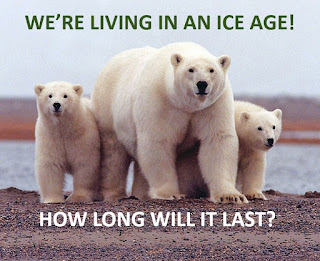 |
| Created from plastic bottle collected on a Florida beach. |
REDUCE - REUSE - RECYCLE
It rolls of the tongue pretty easy in this order and that's perfect, because we should be thinking in that order. So, let start in that order.When you throw something away, what does "away" mean to you? When we throw something away it's usually because we have no use for it any more or we really just want it away from us. Perhaps it stinks or it's just old, ugly or is no longer useful. Maybe it's hazardous or dangerous, so we want some distance. We all know, whatever it is, it won't just disappear and cease to exist any longer. So, we throw it away, only to become part of an environment far from us. Unfortunately, it will become part of someone's or something's environment. Sadly, that can spell disaster for other's lives. On the bright side, we can modify our purchasing habits by considering the end-life of the products we buy.
Reducing and Reusing Basics
The most
effective way to reduce waste is to not create it in the first place. Making a
new product requires a lot of materials and energy - raw materials must be
extracted from the earth, and the product must be fabricated then transported
to wherever it will be sold. As a result, reduction and reuse are the most
effective ways you can save natural resources, protect the environment and
save money.
Benefits of Reducing and Reusing
Benefits of Reducing and Reusing
- Prevents pollution by reducing the need to harvest new raw materials
- Saves energy
- Reduces greenhouse gas emissions that contribute to global climate change
- Helps sustain the environment for future generations
- Reduces the amount of waste that will need to be recycled or sent to landfills and incinerators
- Allows products to be used to their fullest extent
- Saves money
- Buy used. You can find everything from clothes to building materials at specialized reuse centers and consignment shops. Often, used items are less expensive and just as good as new.
- Look for products that use less packaging. When manufacturers make their products with less packaging, they use less raw material. This reduces waste and costs. These extra savings can be passed along to the consumer. Buying in bulk, for example, can reduce packaging and save money.
- Buy reusable over disposable items. Look for items that can be reused; the little things can add up. For example, you can bring your own silverware and cup to work, rather than using disposable items.
- Maintain and repair products, like clothing, tires and appliances, so that they won't have to be thrown out and replaced as frequently.
- Borrow, rent or share items that are used infrequently, like party decorations, tools or extra chair and tables.
One
person's trash is another person's treasure. Instead of discarding unwanted
appliances, tools or clothes, try selling or donating them. Not only will
you be reducing waste, you'll be helping others. Local churches, community
centers, thrift stores, schools and nonprofit organizations may accept a
variety of donated items, including used books, working electronics and unneeded
furniture.
Resources
for Donating Specific Goods and Materials
A quick Google search and you find a group to take just about anything, but here are a few for starters:
A quick Google search and you find a group to take just about anything, but here are a few for starters:
- Your local schools
- Households and Personal Items: Goodwill, Salvation Army, ClothingDonations.org
- Donate your used electronics
- Building Materials
- Vehicles: Kars4Kids, Wheels4Wishes
- General: Charity Watch
There's a lot more to recycling than just single use plastic bottles, bags and aluminum cans. A large percentage of what we purchase and consume has some potential for recycling. We can make that percentage higher by being conscious about the products we purchase and whether one product is better suited for recycling. We may not think about them often, but some of the items we should be recycling include old tires, clothing, motor oil, food scraps, cell phones, laptops, batteries, yard clippings and so much more. We'll explore some of them here and offer some tips to help you recycle them.
Recycling Basics
Recycling
is the process of collecting and processing materials that would otherwise be
thrown away as trash and turning them into new products. Recycling can benefit
your community and the environment.
Benefits
of Recycling
- Reduces the amount of waste sent to landfills and incinerators
- Conserves natural resources such as timber, water and minerals
- Increases economic security by tapping a domestic source of materials
- Prevents pollution by reducing the need to collect new raw materials
- Saves energy
- Supports American manufacturing and conserves valuable resources
- Helps create jobs in the recycling and manufacturing industries in the United States
- Earn Money
Recycling
includes the three steps below, which create a continuous loop, represented by
the familiar recycling symbol.
 |
| Recycle Symbol |
Step 1: Collection Processing
- There are several methods for collecting recyclables, including curbside collection, drop-off centers, and deposit or refund programs.
- After collection, recyclables are sent to a recovery facility to be sorted, cleaned and processed into materials that can be used in manufacturing.
- Recyclables are bought and sold just like raw materials would be, and prices go up and down depending on supply and demand in the United States and the world.
- More and more of today's products are being manufactured with recycled content. Common household items that contain recycled materials include the following:
- Newspapers and paper towels
- Aluminum, plastic, and glass soft drink containers
- Steel cans
- Plastic laundry detergent bottles
- Recycled materials are also used in new ways such as recovered glass in asphalt to pave roads or recovered plastic in carpeting and park benches.
You help close the recycling loop by buying new products made from recycled materials. There are thousands of products that contain recycled content. When you go shopping, look for the products that can be easily recycled. Of course, that can be hard to do at times, especially with misleading marketing claims and labels.
These
symbols were created by plastic manufacturers to help people identify the kind
of plastic resin used to make the container. This can help you determine if the
container can be accepted by your local recycling program. The resin number is
contained in a triangle, which looks very similar to the recycling symbol, but
this does not necessarily mean it can be collected for recycling in your
community.
What are the most common
items that I can put into my curbside recycling bin?
- Cardboard
- Paper
- Food boxes
- Mail
- Beverage cans
- Food cans
- Glass bottles
- Jars (glass and
plastic)
- Jugs
- Plastic bottles and
caps
Used Oil
Never
dump your used motor oil down the drain — the used oil from one oil change can
contaminate one million gallons of fresh water. By recycling your used oil, you
not only help keep our water supply clean, but help reduce American dependence
on foreign oil. It takes 42 gallons of crude oil, but only one gallon of used
oil, to produce 2.5 quarts of new motor oil. Many garages and auto-supply
stores that sell motor oil also accept oil for recycling. Check out our
resources on learning to manage, reuse or recycle your used oil. You
can also find a motor oil recycler near at Earth911.
How do I know what my
local recycling options are?
Contact your local county or municipality to determine your local recycling options. Additionally, please check out the I Want to Be Recycled website for more information.
Contact your local county or municipality to determine your local recycling options. Additionally, please check out the I Want to Be Recycled website for more information.
Can I recycle plastic bags
and wrap/film? If so, how and where?
First, be sure to cut off the zippers (if necessary). Many grocery and department stores will accept plastic bags and wrap/film. Ask your local grocery and department store, or visit the Plastic Film Recycling website or Earth911 to find a location nearest you that recycles plastic bags and plastic wrap/film.
First, be sure to cut off the zippers (if necessary). Many grocery and department stores will accept plastic bags and wrap/film. Ask your local grocery and department store, or visit the Plastic Film Recycling website or Earth911 to find a location nearest you that recycles plastic bags and plastic wrap/film.
Can I recycle Food and Drink Containers?
- Styrofoam: While most recyclers don’t accept Styrofoam, check with your local recycling provider first to be certain.
- Egg cartons: It depends on the material of the carton. Check with your local recycling provider first to be certain.
Can I recycle materials with food residue or does the material have to be perfectly clean?
Generally, plastic, metal and glass materials must be empty and rinsed clean of food
debris before being recycled. Paper materials must be empty, clean and dry
before being recycled. Wet paper/food-soiled paper products may be compostable.
What should I do with
dirty diapers?
Generally, you should flush the excrement down the toilet and then place the diaper in the trash. Also, consider using reusable cloth diapers instead of disposable diapers. You can also check with your local solid waste agency/recycling provider first.
Generally, you should flush the excrement down the toilet and then place the diaper in the trash. Also, consider using reusable cloth diapers instead of disposable diapers. You can also check with your local solid waste agency/recycling provider first.
The next part to this post will focus on some of the more hazardous materials around our homes. You can catch the continuation and other environmental news and tips by signing up for the Green Home blog here.
























